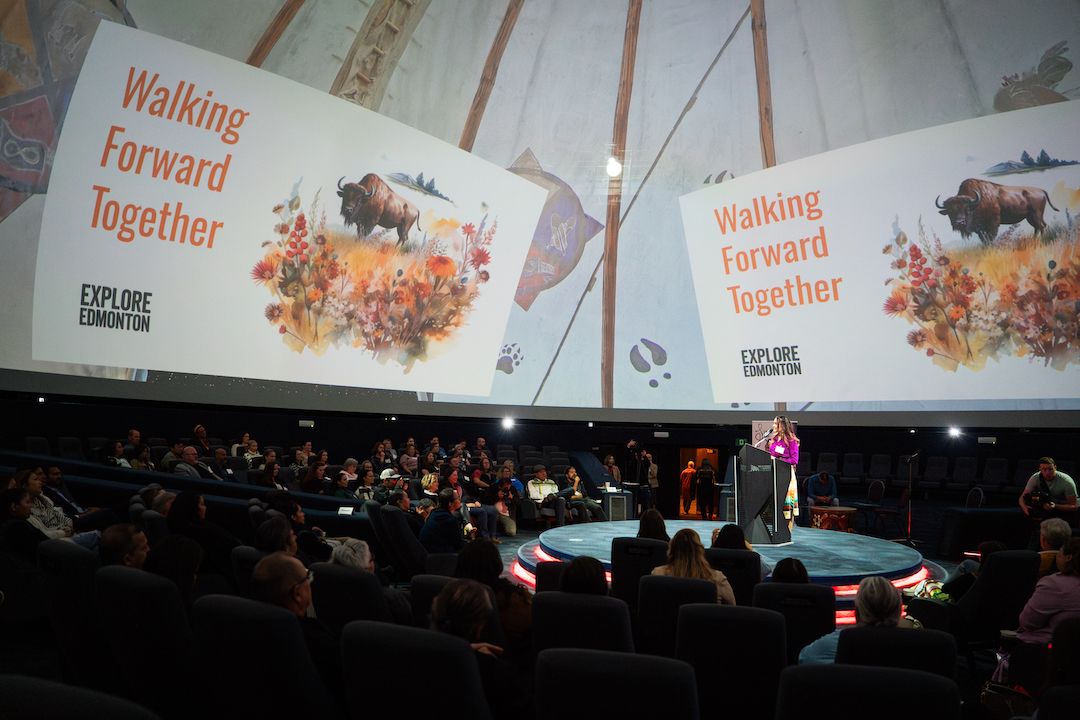
Indigenous Tourism Strategy focuses on understanding, economic reconciliation
A new Indigenous tourism strategy from Explore Edmonton that's aimed at international travellers could be a step towards economic reconciliation, but observers note such work can also create unhealthy expectations unless Indigenous communities are in the driver's seat.
"Tourism is really an avenue for economic reconciliation," Paul Hawes, vice-president of destination development and marketing for Explore Edmonton, told Taproot. "If you think about the tourism business, it's driving funds and money, and line of sight, into Indigenous business, the stories of Indigenous peoples, and then putting money into Indigenous communities."
Hawes said Explore Edmonton's 56-page Indigenous Tourism Strategy: Walking Forward Together, known in Cree as mâmawokamâtowin, is an effort to increase the economic benefit of the tourism sector, including reconciliation. Hawes and Explore Edmonton built the strategy with input from five Indigenous people, who created an advisory circle.
Still, observers caution that while cultural tourists can bring dollars, they can also create pitfalls. Challenges, they say, are often related to environmental impact, as well as cultural commodification, where a specific cultural group can feel pressure to perform a digestible version of their identity in order to align with tourists' expectations.
"If you're having folks that don't live in these areas, tourists coming from abroad or even just other parts of Canada, there are expectations that people have," Jacquelyn Cardinal, CEO of Indigenous consultancy Naheyawin, told Taproot. "It's up to Explore Edmonton and other organizations that do this important work to make sure that they actually place Indigenous peoples in the driver's seat, because there is an absolute risk of external entities trying to come in to shape or control the narrative in line with commodification for a broader appeal to the market."
Hawes led development of the strategy to integrate with Explore Edmonton's broader Tourism Master Plan. The strategy speaks extensively of building relationships among existing Indigenous tourism companies and using storytelling to promote these companies. It was fuelled in part by research that demonstrates growth in Indigenous tourism in Canada is outpacing growth in non-Indigenous tourism, and that international travellers are often the paying customers.
"We identified 57 initiatives from the tourism master plan that we will tackle over 10 years," Hawes said. "There were two pieces of work that we really needed to tackle first and foremost, because they'll probably be a lens for almost all of the work that we do ongoing. One of the pieces is around our regenerative tourism strategy … and then the Indigenous tourism strategy."
Hawes said the regenerative tourism strategy within the master plan focuses on "responsible, sustainable and regenerative" approaches to tourism that can limit the environmental consequences of tourism, and is linked to the agency's overall Indigenous strategy.
"The advisory circle said this to us a lot — 'This is what we do, Indigenous culture is making sure that the land is rejuvenated and not taken from,'" he said. "We found that there were different organizations working on the two pieces, but they've met together to share insights on each of the strategies because of the alignment and overlap."



